Artist and runner Greg Itahara may have followed in his father’s footsteps—intentionally or not—but he has ended up leaving his own very special footprints all over the contemporary running landscape. Itahara, who calls himself a visual storyteller, came organically to the idea of creating a narrative through art. His father was a professional photographer, whose friends would come over to storyboard concepts, and Greg soaked it up. By the time he was an adolescent he knew he wanted to be an artist too, though he would choose pencil and brush over camera as the tools of his trade. Armed with talent and his father’s enthusiastic support, Itahara chose a career in graphic design, and like his father, turned concepts into stories through his art.
Telling stories through pictures is a tradition as old as humanity itself. From the pictographs of ancient Egypt, to the petroglyphs of the American Southwest, to the cave paintings of Lascaux, the world’s peoples have been leaving behind their life stories, their creation myths, their beliefs and hopes and dreams, painted on or incised into stone for future generations to see, read and interpret. From stone and wood, to papyrus and parchment, to paper and canvas, and on to 3D computer imaging and intricate, airborne drone sculptures, humans have been telling stories with visual art since the very beginning.
“I started thinking of myself as a storyteller pretty early,” says Itahara, “But I wanted these stories to stand out in a more artistic way. I wanted to create something people would be drawn to.”
Itahara’s father was also a runner. “On weekends when I was a kid, he would take off for hours on the weekends, come home tired, slowly take his shoes off. I was only dimly aware that he was training or running road races. He took trips when I was in elementary school, and it was only years down the road that I learned he was off running marathons. It was later yet that I understood that running was his me-time, that it was not just about getting from point A to point B, but a lifestyle, one he shared with his photographer friends.”
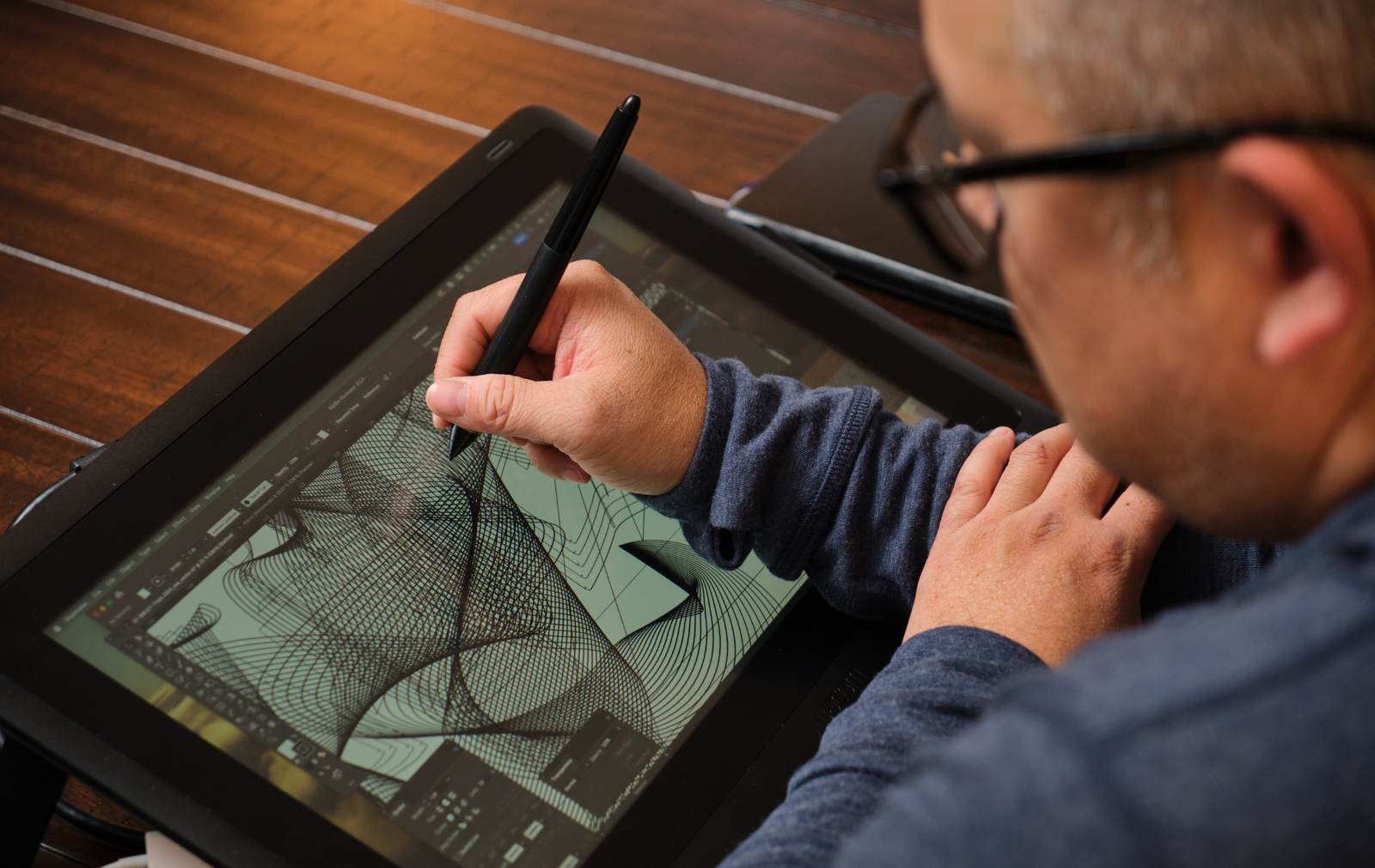
Itahara began following in his father’s artistic footstep early on. It took a little longer, however, for him to lace-up a pair of trainers and follow those footsteps more literally.
“I was doing graphic design in the advertising industry, camping out in the studio, working for days on end, ordering takeout, being totally sedentary.”
He took up running in 2009 after the birth of his son.
“I started by just trying to run around the block. From there it went to running a 5k, then a couple of half marathons….” His voice trails off.
Eventually, Itahara ran five Chicago Marathons and two Walt Disney World Marathons. At present, he says, he runs mainly to stay healthy and to stimulate his creativity.
“The best way to think about the work,” he says, “is to not think. And running is perfect for that. You get to a place where your mind is open and free, and the images just start to happen. The worst thing is to get so fixated, to overthink, find yourself obsessing into the wee hours of the morning. Running has sort of helped free me from that.”
We talked a little about the idea of letting things happen versus making things happen, learning when it is best to do which, how running is kind of the sweet spot where both happen at once. One makes oneself get out the door, put one foot in front of the other, but soon the rhythms of running—the metronome of footfalls, the in-and-out of breath—free the mind to engage the art, consciously or not.
“One thing non-artists have trouble understanding,” Itahara says, “Is that thinking about the art is part of making the art, and for me running is a big part of that. It’s all one thing. There’s no time frame where you arrive at work, leave work. Life is the work. Running frees the mind, opens it up to the world. Running takes the mind to a spot that’s almost like a meditative state.”
“I have this run where I would run the same lap for twenty miles. Sounds boring,” he laughs, “I know. But not thinking about where to run frees my mind to go to other spaces, open up and let the ideas in.”
Thus, when Itahara finishes a run, he is often flush with creative energy and ideas for a new piece. This personal evolution, this fusion of running and art, soared to another level for him after the pandemic hit, putting the kibosh on the advertising industry, leaving him to look for another outlet for his creativity. He began painting running shoes for fun. This led to a custom singlet for a friend, and soon he was designing race shirts, singlets, medals, bib numbers, and all sorts of other paraphernalia for Chicago area running organizations. By the dawn of 2023, Itahara’s work was about to go world-wide.
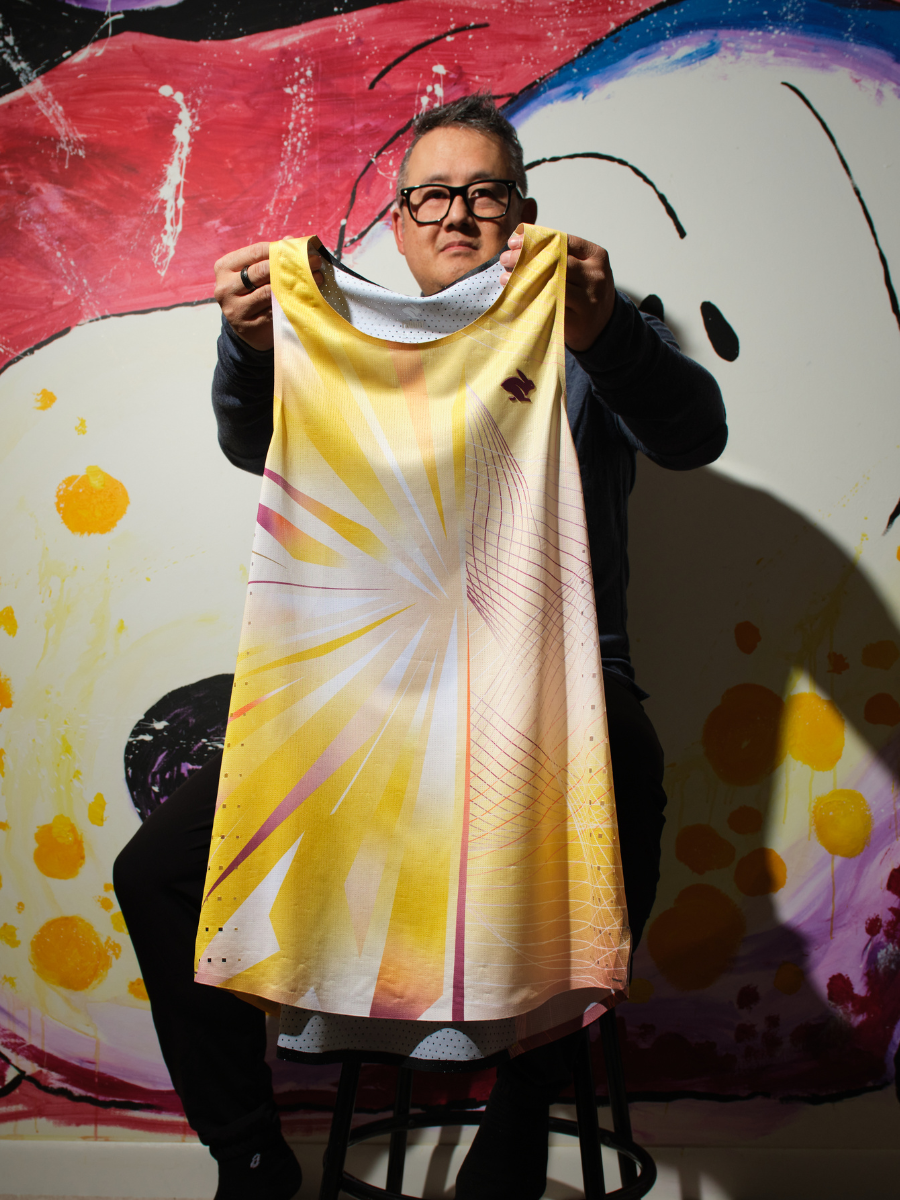
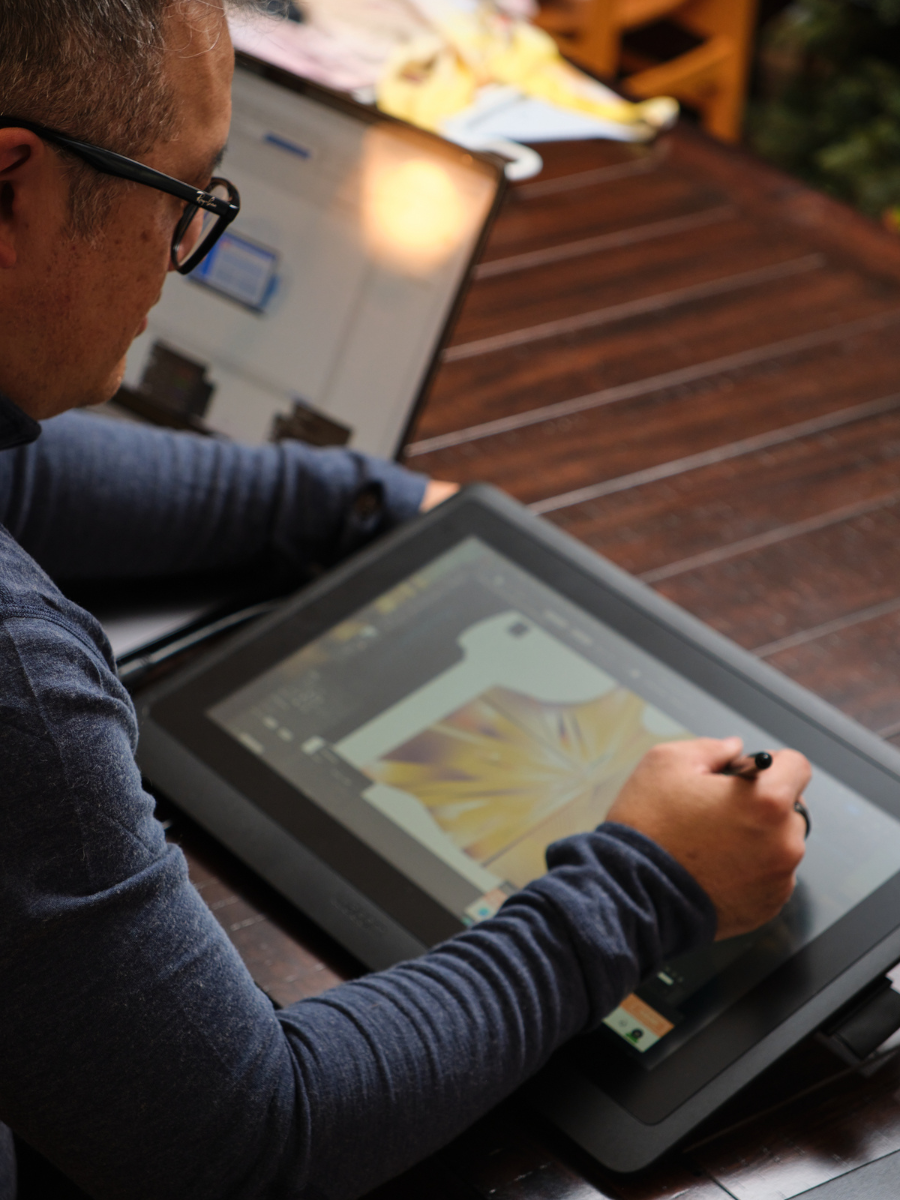
Some of his designs had caught the eye of representatives from Japanese footwear and apparel giant, ASICS. They reached out, asked him to customize shoes live at industry tradeshow The Running Event (TRE) in Austin Texas. His custom Gel Nimbus 25 from the event is, well, a work of art. The TRE gig led to Itahara being asked to design a custom Asics Gel Kayano 30, which he hand-painted and presented to Toshikazu Kayano—the legendary Kayano-san—designer of ASICS’ flagship trainer, the Gel Kayano.
“I thought I might pass out,” said Itahara of the moment, which will always remain a milestone. The shoe now resides permanently in the ASICS archive, and can be viewed online.
“The running industry is still fairly small,” (despite being a multi-billion dollar behemoth) says Itahara, “Everybody knows everybody.” And thus, he found himself at the aforementioned TRE, grabbing a bite with Connor Blalock, content running specialist and social media face of online retailer Running Warehouse. Blalock suggested that Itahara might create a custom design for a running apparel company to be featured on the Running Warehouse site. The day after that chance lunch, Itahara had the ear of longtime coach and Running Warehouse owner, Joe Rubio, who loved the idea and had the perfect company in mind.
Enter Monica DeVreese, co-owner of Santa Barbara, California-based rabbit, founded in 2014, but already a major player in the running apparel world. DeVreese liked what she saw of Itahara’s work, and soon, DeVreese, Rubio, and Itahara had hatched a plan to premier a singlet— by rabbit and exclusive to Running Warehouse—to commemorate and celebrate rabbit’s sponsored athletes competing in the US Olympic Marathon Trials in February 2024.
The design came to be known as ‘Trials and Triumphs.’ Itahara describes it like this: “I think of two-thirds as a pattern of shattered glass, and one third as energy being released in a wave-like pattern,” he says. “And even though the singlet celebrates athletes running the Trials, it also celebrates every runner, who even though they are facing their own trials and tribulations, says, ‘Today I’m going to make time for this. I’m going to start today!’”
“The two-thirds of the singlet symbolize breaking the mirror that shows the old you, what’s behind you, shatters the old you that made excuses, while the other third represents the waves of energy the new you sends into the future after breaking the mold of who you once were.”
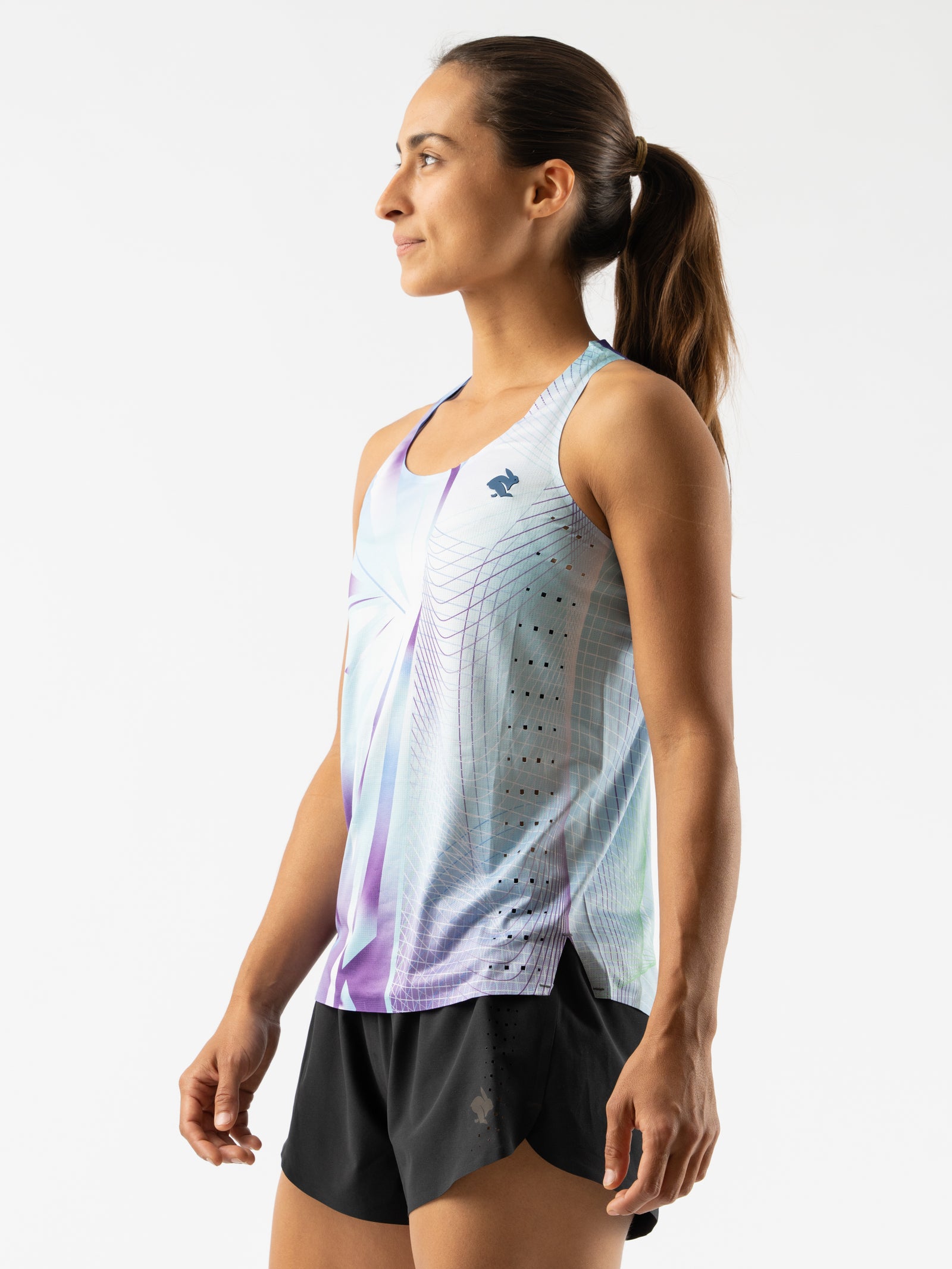
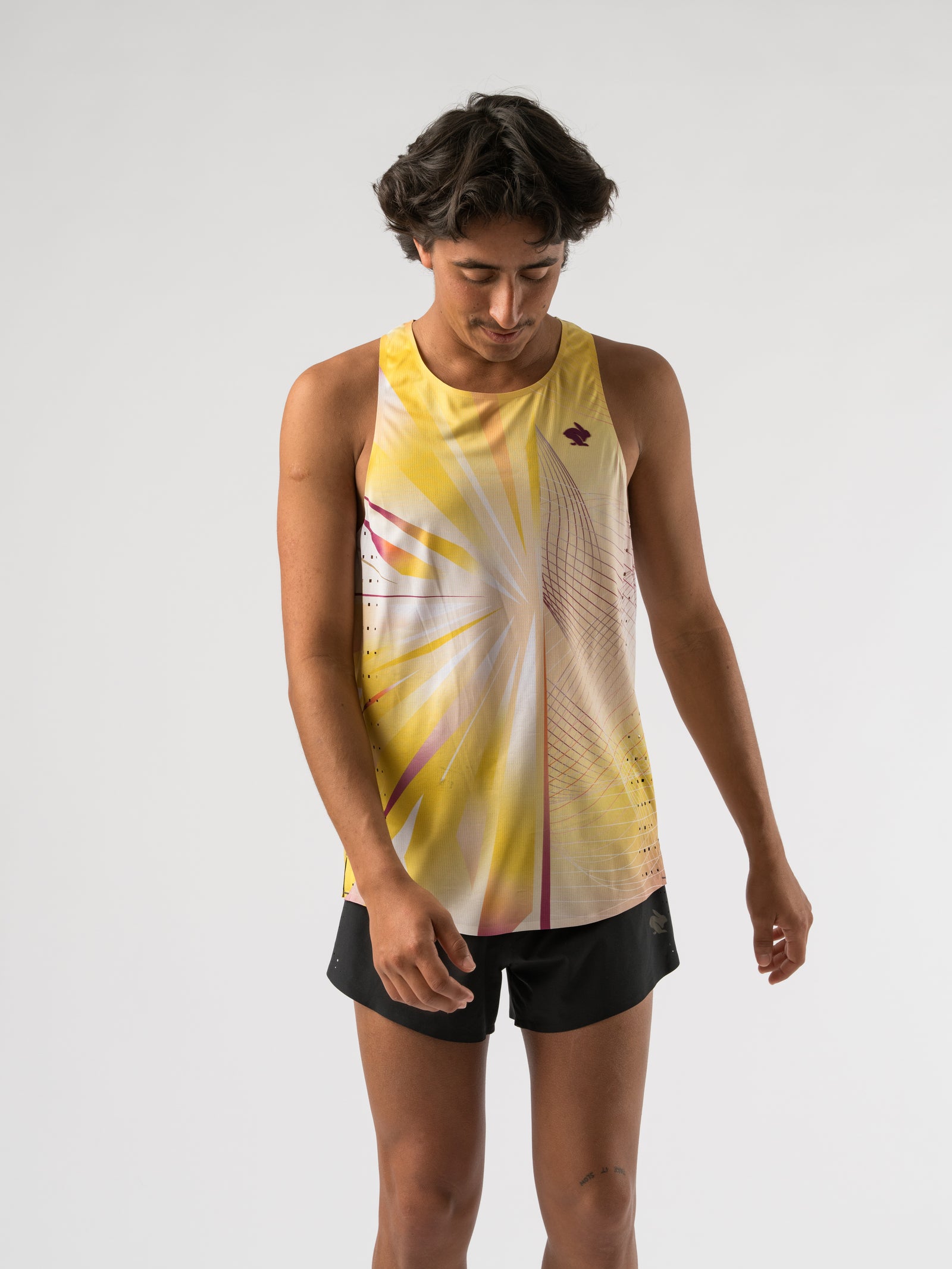
And what about Greg Itahara’s dream for his own future?
“I love working in the custom world, I love creating one-of-one pieces of artwork for people to wear, he says, “But I also loved working with rabbit, getting my designs on more bodies, telling my stories to a wider audience. Monica and rabbit, Connor and Joe at Running Warehouse really opened the gate for me, invested in what I do. Who wouldn’t want to do more of that! And no matter what, I will keep telling my stories.”
Telling stories, breaking mirrors, making waves; it looks like Greg Itahara is just getting warmed-up.






